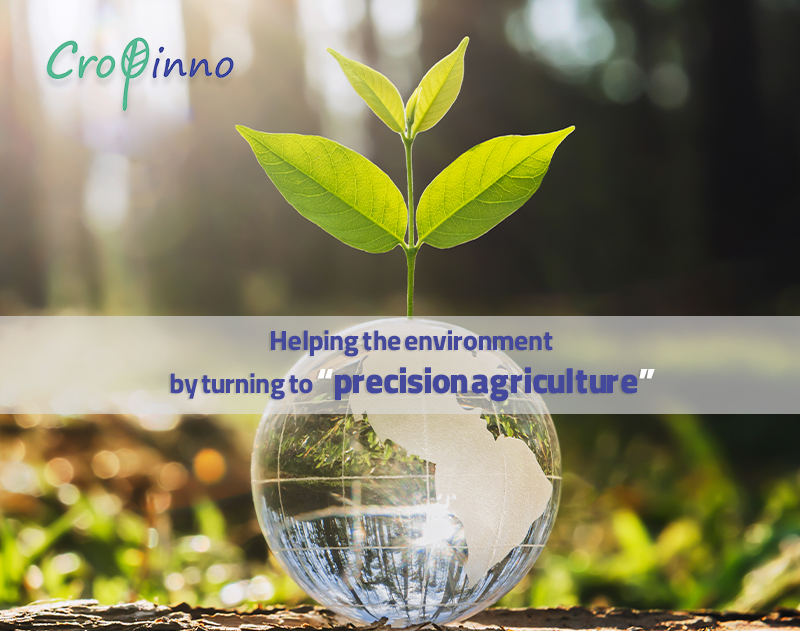It is clear that one of the biggest challenges the human society struggles with is the food crisis and food health & security in proportion to the growing population of the world. On the one hand, this increase in population and on the other, the lack of raw materials for production have caused agriculture to change from traditional to industrial in recent decades, but improper use of chemical inputs (pesticides and fertilizers) in different stages of industrial agriculture, Will bring challenges that could affect both human beings and other living things; This includes the emergence of new pests and diseases and the resistance of pest and disease species and weeds to chemical toxins. Toxic residues in the soil also have adverse effects on soil organisms and if absorbed by plants, they could enter the food chain and lead to harmful effects on plants, humans and other living things.
It is true that unprincipled agriculture has changed the face of the earth and the environment by different means, each of which we intend to examine separately in this article;
Water shortage crisis
Water is a vital resource for every biological and human phenomenon. After oxygen, water can be considered the most essential natural source for the survival of life on earth, at the same time, the most critical natural source is undoubtedly water. The world community predicts that by 2050, the world’s population will increase to 9.2 billion, and as a result, demand for food will increase by 70% and energy consumption by 40%. Also, according to forecasts, by 2030, the world will face 40% water shortage (less than demand). with this trend, in the near future, many areas will suffer from severe water shortages or drought. The water crisis becomes more important in countries that are located in the dry belt of the planet with arid and semi-arid areas. Reports from the Food and Agriculture Organization of the United Nations (FAO) show that water resources in 93 countries are declining, while there is no alternative.
The crisis caused by the scarcity of water resources is a serious threat to both the environment and human health and well-being. Currently, the agricultural sector has the largest share of water consumption (on average 70%). There is evidence that the water crisis will have irreparable consequences if there is no coherent and systematic plan for the sustainable management of water resources, especially in the agricultural sector, which is the most important consumer.
We must consider that natural resources are limited and may have zero or near-zero replenishment ability in the event of contamination or loss, & never be able to return to normal.
Air Pollution
The air we breathe for free could actually be very costly! We are surrounded by air; it is always there and we never worry about it running out. But in fact, it is “clean air” that, as a limited and extremely valuable resource, deserves more attention from us. The entry of toxic pollutants into the Earth’s atmosphere has serious environmental consequences and is a serious threat to life on Earth.
The world is experiencing huge climate change problems, and one of the main reasons is the increase in the concentration of carbon dioxide in the atmosphere. Agriculture and forestry with a 24% share in greenhouse gas emissions (and carbon at the top) play a significant role in climate change related consequences. Due to the high soil carbon storage, the slightest change in the amount of organic carbon stored in the soil has very large consequences on the concentration of carbon in the atmosphere; Wrong crop operations such as uncontrolled plowing and destruction of native plants increase the amount of carbon in the atmosphere. Loss of soil carbon storage, in addition to atmospheric consequences, also causes the loss of physical and chemical structure of soil and is generally one of the main factors affecting global warming.
Soil pollution
The food chain of all ecosystems originates from the soil. To understand the importance of soil as a limited vital resource, we must know that soil formation is very time consuming and its process of improvement and fertility will be very costly. Wrong actions such as burning crop residues to control pests and speed up plowing operations for the next crop will reduce the level of nutrients in the soil, reduce permeability, reduce the activity of beneficial microorganisms and, in general, adversely affect soil quality.
Surface water and groundwater pollution
Nitrate and Phosphate are the two major pollutants in groundwater that originate mainly from agricultural activities. Two Greek scientists/researchers conducted a study that found the main reason for the increase in groundwater nitrate to be the rapid leaching of chemical fertilizers in agricultural areas, which increases the salinity of water and soil and reduces their quality.
The use of chemical fertilizers has increased nitrate in surface and groundwater, which leads to an increase in water nitrogen. This results in the rapid growth of aquatic weeds and the blockage of rivers, and the proliferation of algae on the surface of the water prevents light from reaching lower depths, thus indirectly reducing the oxygen demand of fish and causing the death of aquatic animals.
Growing problems with unprincipled agriculture
Over the past few decades, the planet has seen an unprecedented warming trend, and its temperature is constantly rising. The main reason for this warming period is the release of greenhouse gases from human activities into the Earth’s atmosphere. Gases around the Earth raise the Earth’s temperature by trapping heat waves.
The agricultural sector has a huge impact on increasing greenhouse gas emissions. Carbon (CO2) and methane (CH4) are the most important greenhouse gases that are closely related to the carbon cycle in the soil. One of the factors increasing the amount of methane in the atmosphere is increasing rice cultivation and more paddy fields. It is worth mentioning that rice fields alone are the source of more than 50% of atmospheric methane produced.
A game-changer called: Precision Agriculture
Improper use of pesticides and fertilizers has damaged agricultural ecosystems and reduced the quantity / quality of agricultural products. On the other hand, as mentioned above, conventional but unprincipled practices in agriculture cause irreparable damage to various sectors of the environment. Therefore, we must look for new ways in farm management through which we can optimize the consumption of inputs and increase agricultural performance and economic efficiency of a farm.
How can precision agriculture help alleviate this turbulent environmental situation?
Precision farming as a new concept in today’s agriculture is the use of tools and data through which a farmer identifies changes and inequalities within the field and achieves detailed farm management. In fact, precision farming is started before planting. It uses information technology to divide the field into smaller units. It then determines the status and characteristics of each unit so that the farmer can apply the inputs to the exact location of the land, thus saving on inputs. This increases crop productivity and further food production, while reducing agricultural waste and the destructive effects on ecosystems resulting from the improper consumption of inputs.
By turning to precision farming, similar to what happens in Cropinno, the soil will need less tillage operations, and as a result, rapid soil erosion will be prevented and the soil structure of an arable land will be improved. The precise field management can greatly prevent the entry of chemicals into rivers and subsoil and the extinction of soil organisms. The tools used in this method, such as weed maps, phenological indices, topographic maps and land demarcation, can play an important role in the proper management of pest and weed control and the prevention of damage and destruction of living ecosystems, i.e., using these tools crop producers can identify the best time to fight pests and weeds and find out how much pesticides need to be used in which area of the farm. All of these factors play a key role in preserving the environment and provide better food security for the future of humans.

